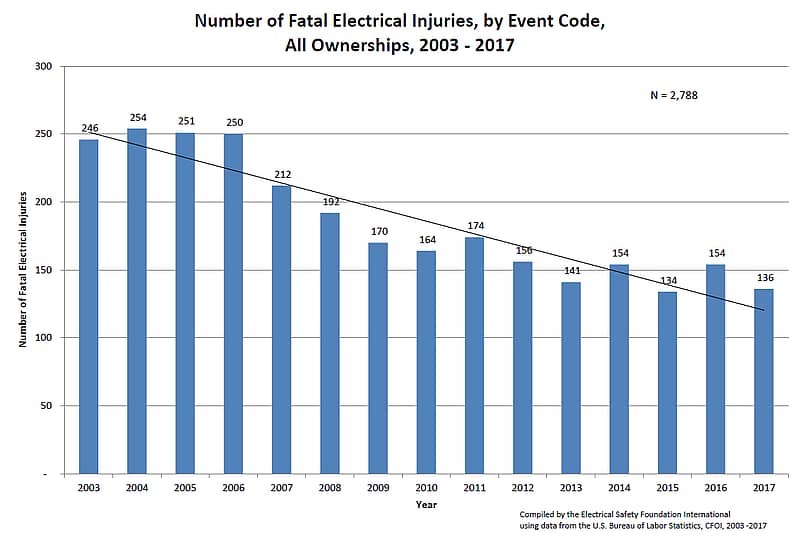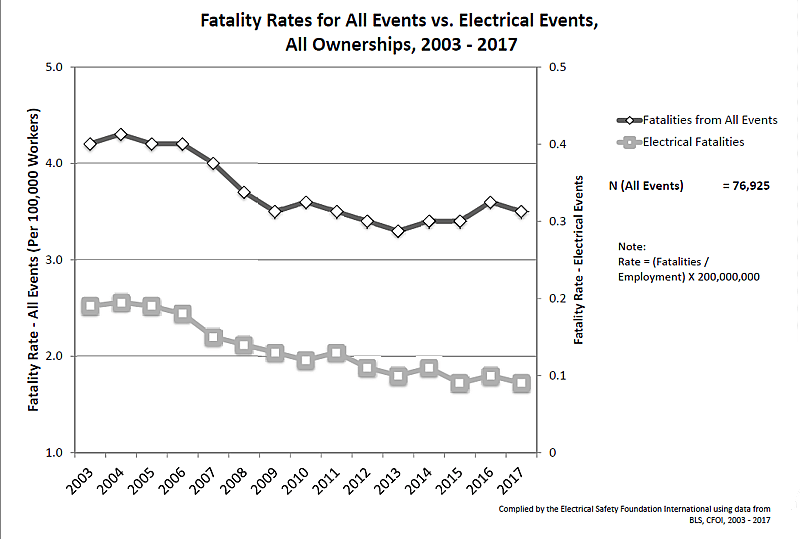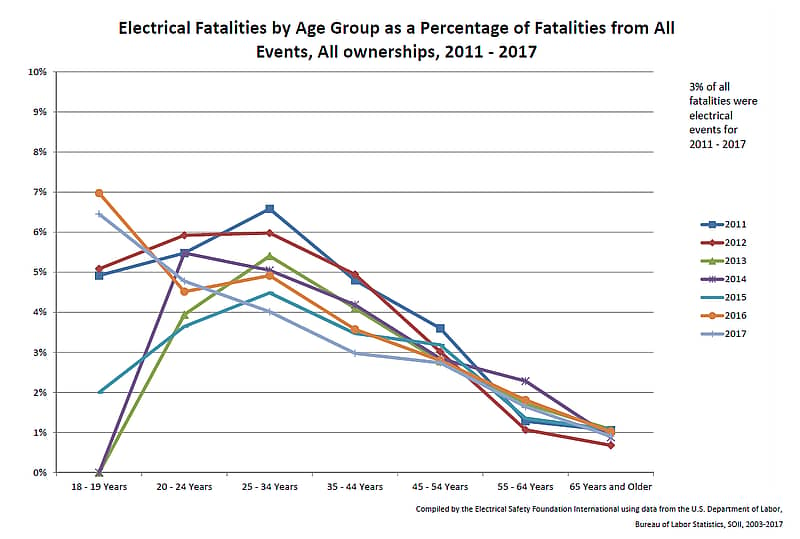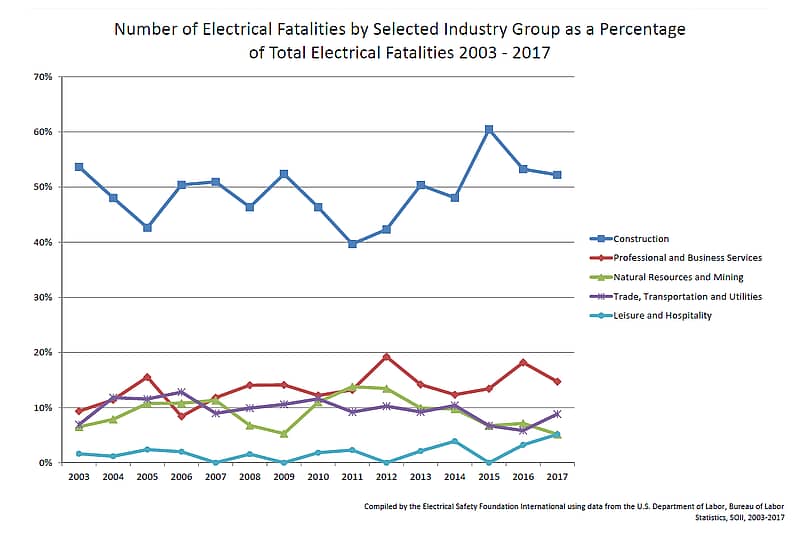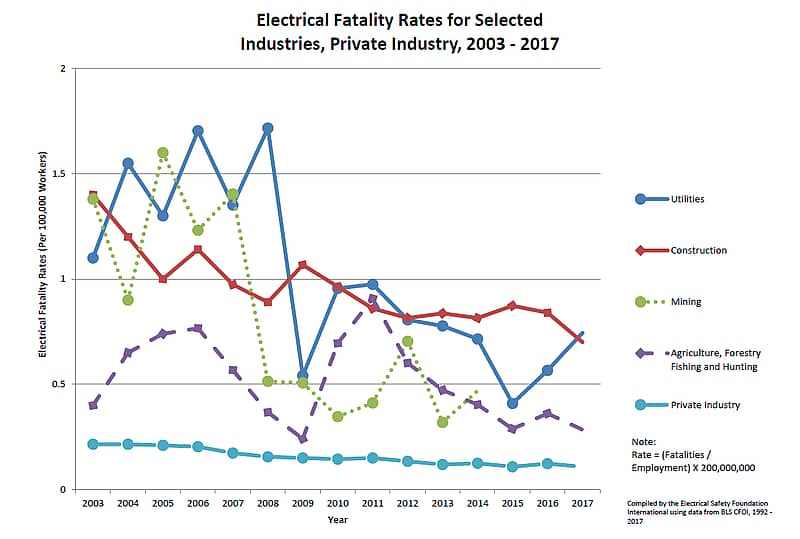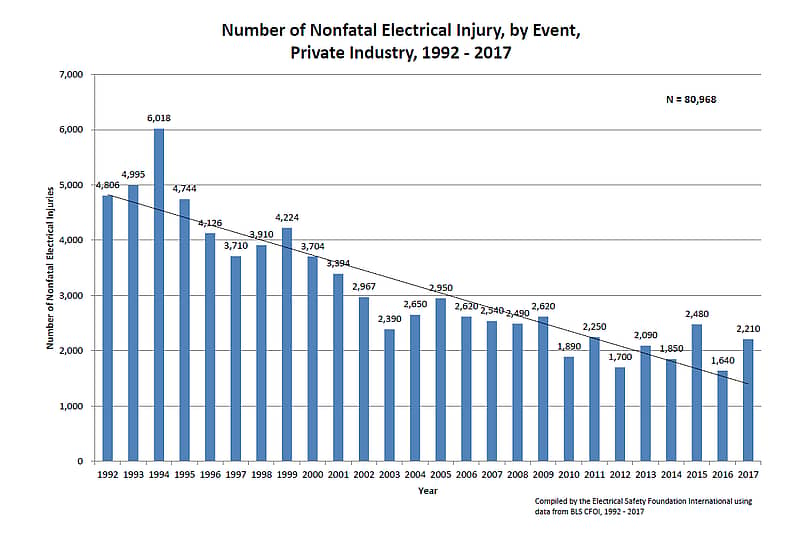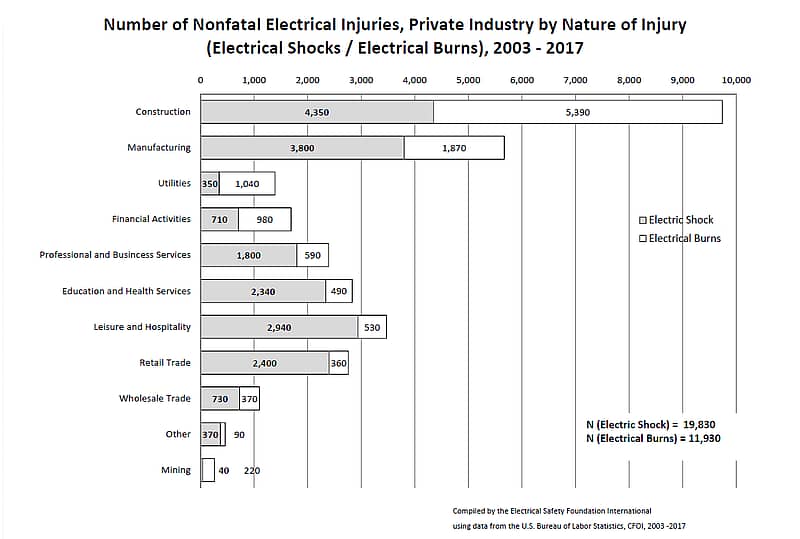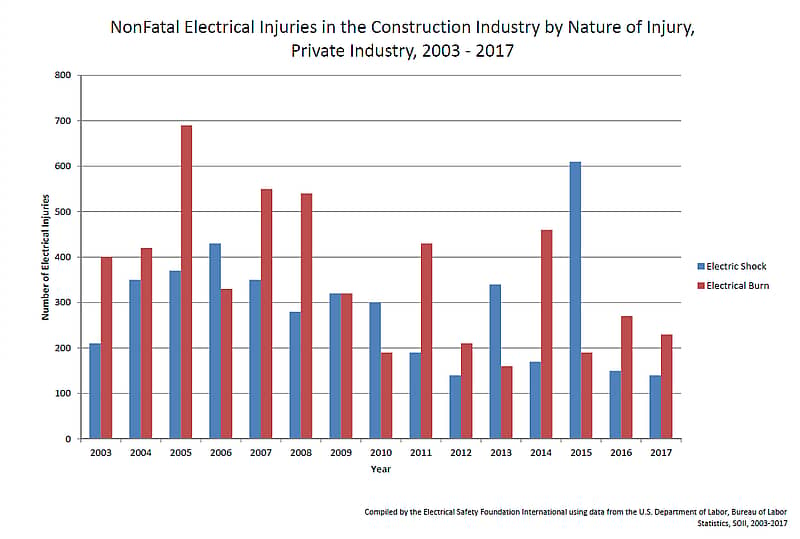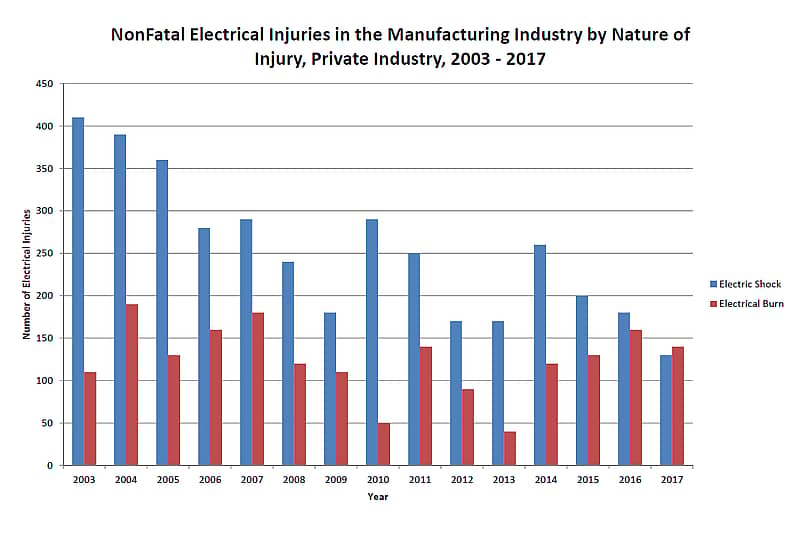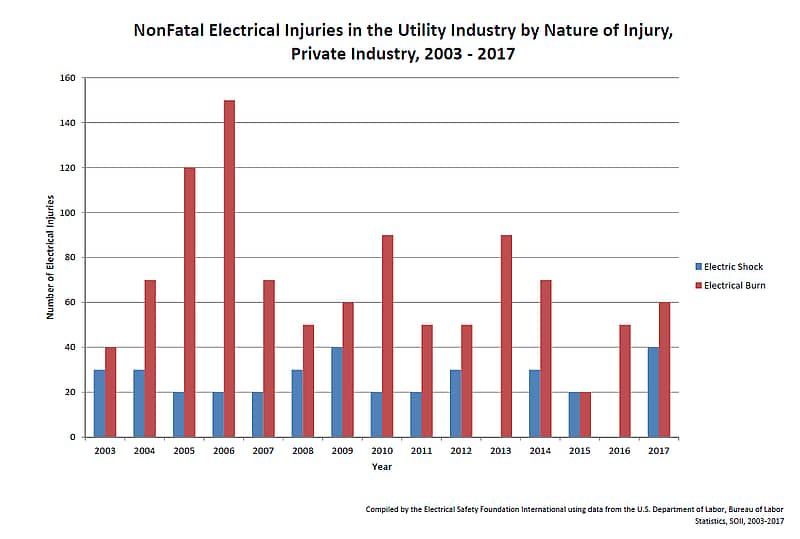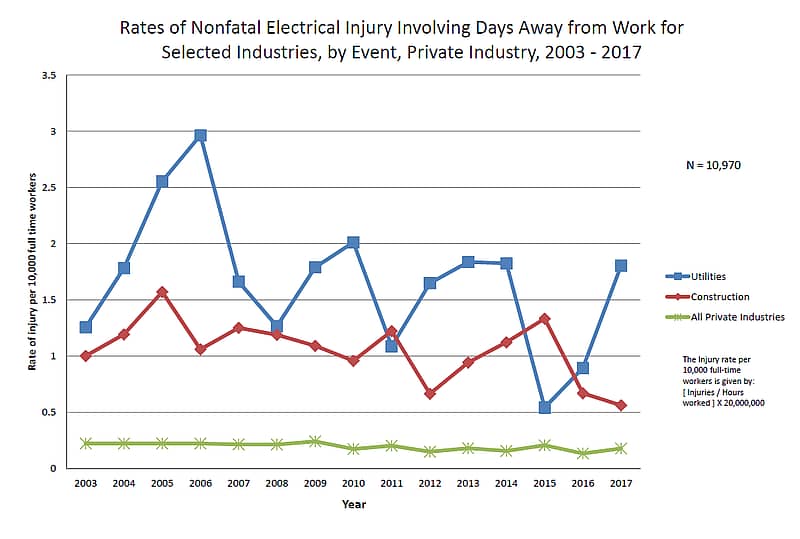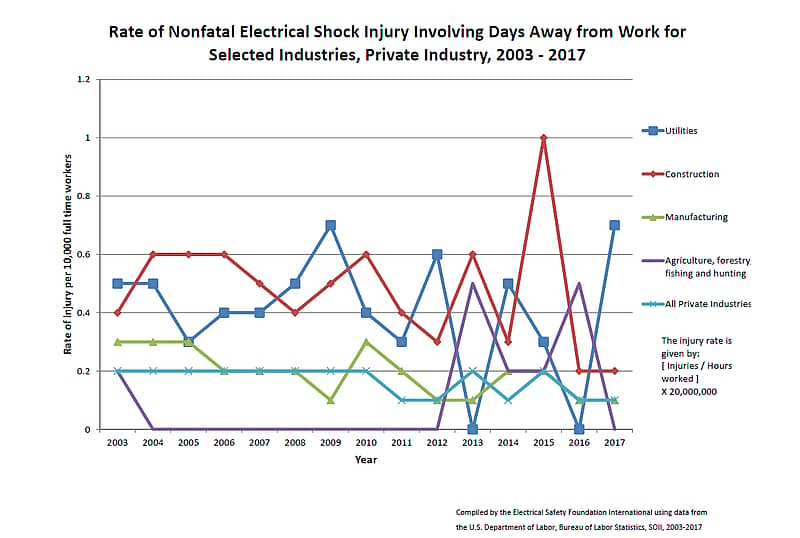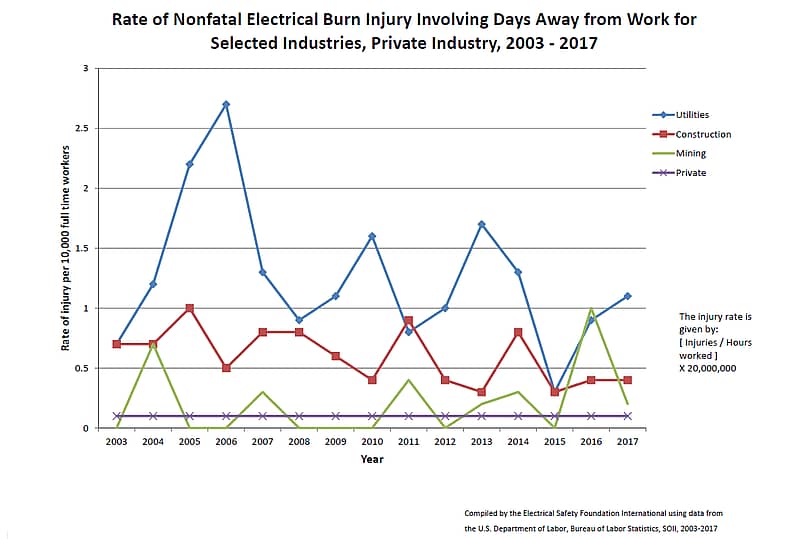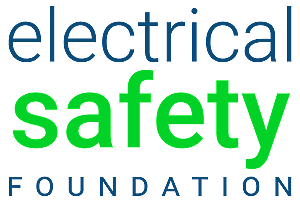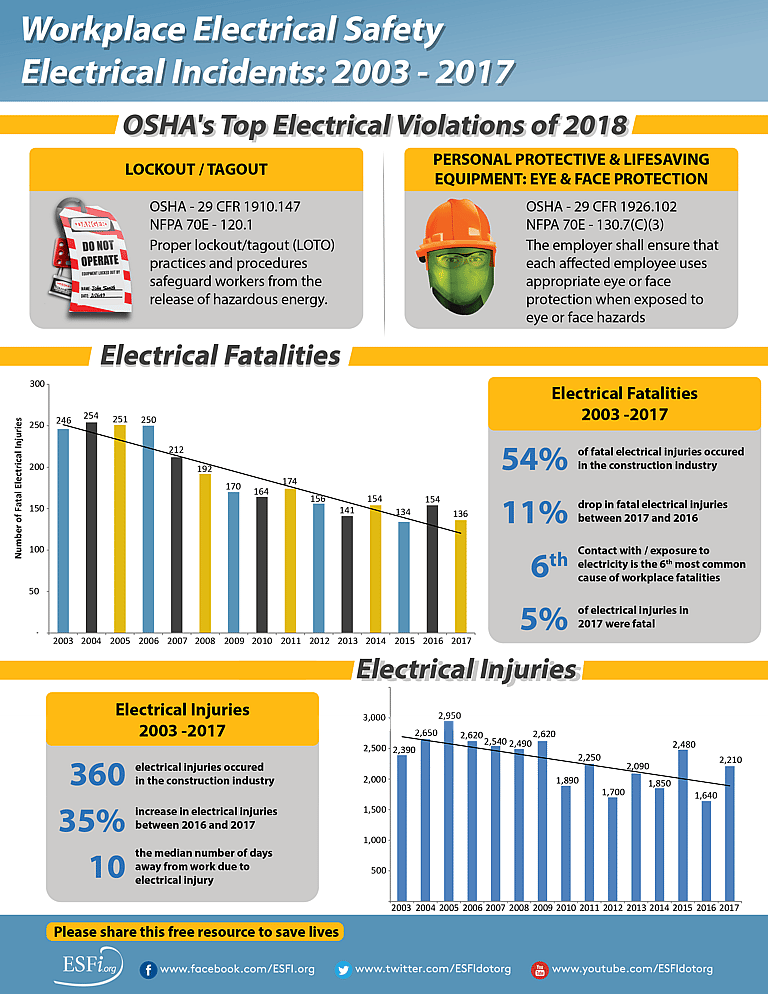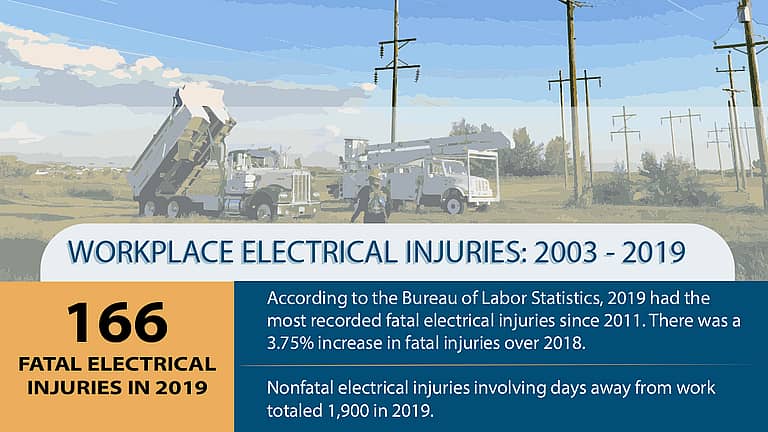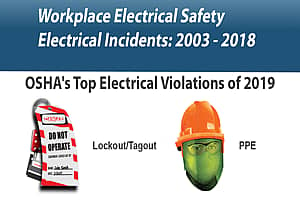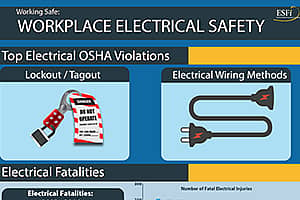The Electrical Safety Foundation International (ESFI) uses the U.S. Bureau of Labor Statistics (BLS) Census of Fatal Occupational Injuries (CFOI) and Survey of Occupational Injuries (SOII) to distill information specifically pertaining to fatal and nonfatal occupational electrical injuries. Each year the ESFI publishes electrical injury information in tabular and graphical form on our website. The most recent data covers the 24 year period from 1992-2017 but mainly focuses on 2003-2017 data.
Workplace Electrical Safety
Bureau of Labor Statistics Census 2017 Census of Fatal Occupational Injuries
Released December 18, 2018
2017 Workplace Electrical Safety Highlights:
Fatal Electrical Injuries
- There were 136 electrical fatalities in 2017. An 11.6% drop from 2016, returning to 2015 levels.
- Contact with / Exposure to electric current accounted for 2.6% of all workplace fatalities. In 2016, they accounted for 2.9%, in 2015 2.7% and 3.1% in 2014.
- Contact with / Exposure to electric current maintained its position as the sixth most common type of workplace fatality.
- Electrocutions accounted for all but one of the workplace electrical fatalities.
- 54% of all fatal electrical injuries occurred in the construction industry compared to 53% in 2016. The second leading industry in electrical fatalities was professional and business services with 20 fatalities (15%).
- The utility industry had the highest rate of fatal electrical injuries (0.74 / 100,000) followed by construction (0.70/ 100,000)
- Electrical fatalities account for 5.7% of all electrical injuries.
- Good producing private industries (natural resources and mining, construction, manufacturing) accounted for 64.9% of fatal electrical injuries compared to 35.1% fatal injuries from service-providing private industries maintaining 2016 numbers
- Younger workers are more likely to experience electrical injuries:
- Workers 16 to 17 years of age experienced electrical fatalities at 5.4 times the average for all age groups;
- 18 to 19 age group – 2.4 times;
- 20 – 24 age group – 1.8 times;
- 25 – 34 age group – 1.5 times;
- 35 – 44 age group – 1.1 times;
- Those 45 years and up are at or below the average
Nonfatal Electrical Injuries
- There were 2,210 nonfatal electrical injuries in 2017, an increase of 35% over 2016, and a decrease of 10% over 2015.
- 0.25% of all nonfatal injuries resulting in days away from work could be attributed to electricity during 2017.
- The median number of days away from work for nonfatal electrical injuries was 10, double that of 2016 and the highest number since 2013.
- The industries with the leading number of nonfatal electrical injuries:
- Construction – 360 (16%)
- Real Estate and Rental and Leasing – 330 (15%)
- Professional, Scientific, and Technical Services – 290 (13%)
- Manufacturing – 260 (12%)
- Shocks accounted for 1,330 nonfatal electrical injuries, while burns accounted for 900.
- 140 shocks and 230 burns occurred in the construction industry.
- 40 shocks and 60 burns occurred in the utility industry
- Utilities had the highest rate of electrical injuries with 1.8 /10,000 workers. Construction only had 0.6 / 10,000 workers.
- Real estate and rental and leasing had the second-highest rate with 1.7 / 10,000 workers.
- The highest rate of nonfatal electrical shock was in the Arts, entertainment, and recreation industry with 1.1 / 10,000 workers. Utilities had 0.7 / 10,000 workers while construction had 0.2 / 10,000.
- The highest rate of nonfatal electrical burns was in the Real estate and rental industry with 1.6 / 10,000 workers. Utilities had 1.1 / 10,000 workers while construction had 0.4 / 10,000.
